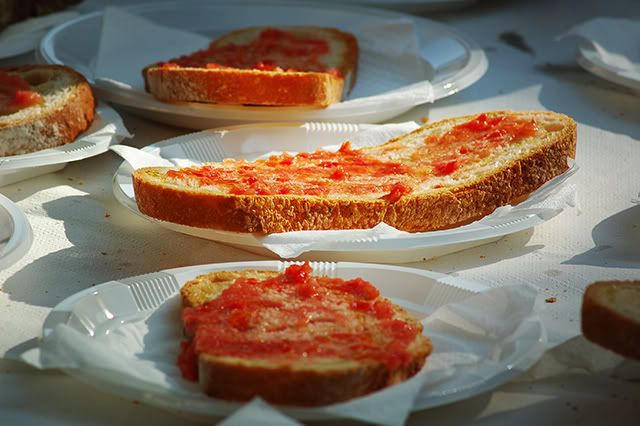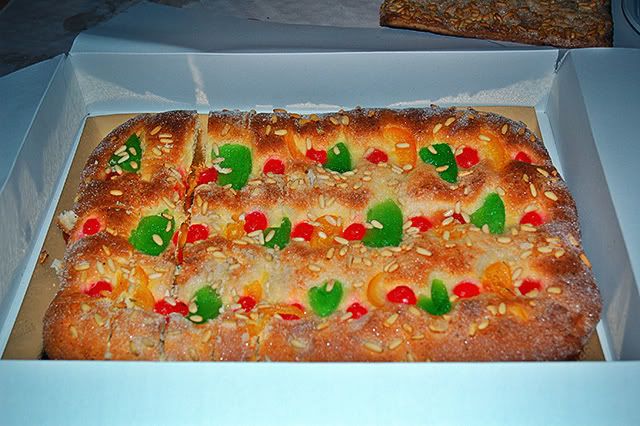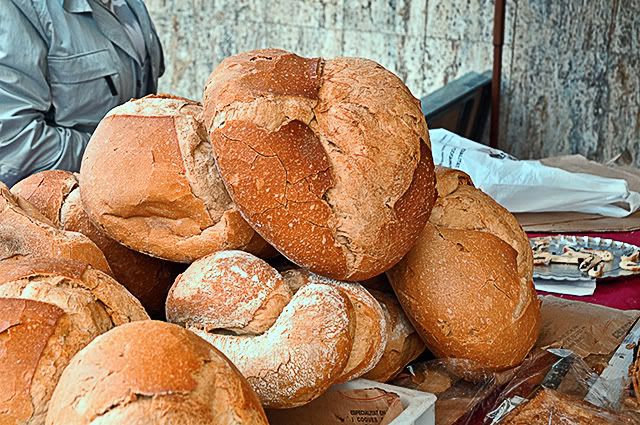
|

|

|

|
One the good things in life, if not the best, is to go out and find a nice meal, at a nice restaurant in a nice place. When it comes to enjoying excellent Mediterranean dishes, Catalan cuisine, is one of the best choices. It's been a long time, I haven't recommended an interesting restaurant in or out of Barcelona and in fact I always forget to use cellphone pictures I take while traveling around Catalonia to share them here with you. That's what a blog is for after all.
Today I want to suggest Restaurant La Violeta in Castelltersol (there should be a letter cedilla after the R but Google spiders don't like foreign letters too much), a Catalan municipality that is part of Barcelona province which historically devoted to the textile industry and took its name after a castle that dates back to the ninth century. Restaurant La Violeta and the hotel with the same name, are located in a house from 1860, restored in the 90s. Apparently is just another normal local restaurant, but I have to say that if you happen to be nearby you shouldn't miss it because its cuisine is certainly worth tasting. When I say nearby, I mean, you could be watching eagles fly in renown Cim d'Aligues natural park or admiring the views at Sant Miquel del Fai.
Today I want to suggest Restaurant La Violeta in Castelltersol (there should be a letter cedilla after the R but Google spiders don't like foreign letters too much), a Catalan municipality that is part of Barcelona province which historically devoted to the textile industry and took its name after a castle that dates back to the ninth century. Restaurant La Violeta and the hotel with the same name, are located in a house from 1860, restored in the 90s. Apparently is just another normal local restaurant, but I have to say that if you happen to be nearby you shouldn't miss it because its cuisine is certainly worth tasting. When I say nearby, I mean, you could be watching eagles fly in renown Cim d'Aligues natural park or admiring the views at Sant Miquel del Fai.
But let's talk about the menu at La Violeta:
For starters, I recommend you don't miss their special tapas, like Formatges arrebossats amb melmelada de violetes (breaded cheese dice in violet marmalade) in the picture above, or the Patatas Bravas a la Violeta. In fact, my wife and I fell in love with that violet flavor and that's why we always try to return when we have the chance. They have a nice selection of salads like the season salad with nuts, cheese, quince and apple.
For the main course, you can either have pasta dishes like the Rossejat de fideus mariners (a sort of Paella but with noodles and sauce) or a good shrimp risotto. I would go for the Arros amb llamantol (rice with lobster) but as you can see in the image, pan fried tuna can suit you well for less money. We were fortunate it was summer and they had the Gazpacho, one of the best I have tried, out of Andalusia of course.
For dessert, there was this homemade ice cream with strawberries that was just the cherry on top of the day. As to the price, it is slightly pricey, not much, but you get quality food and they are not minimalist at all, if you know what I mean. More details on their website following the first image.
For starters, I recommend you don't miss their special tapas, like Formatges arrebossats amb melmelada de violetes (breaded cheese dice in violet marmalade) in the picture above, or the Patatas Bravas a la Violeta. In fact, my wife and I fell in love with that violet flavor and that's why we always try to return when we have the chance. They have a nice selection of salads like the season salad with nuts, cheese, quince and apple.
For the main course, you can either have pasta dishes like the Rossejat de fideus mariners (a sort of Paella but with noodles and sauce) or a good shrimp risotto. I would go for the Arros amb llamantol (rice with lobster) but as you can see in the image, pan fried tuna can suit you well for less money. We were fortunate it was summer and they had the Gazpacho, one of the best I have tried, out of Andalusia of course.
For dessert, there was this homemade ice cream with strawberries that was just the cherry on top of the day. As to the price, it is slightly pricey, not much, but you get quality food and they are not minimalist at all, if you know what I mean. More details on their website following the first image.
![How to Prepare Romesco Sauce [enlarge]](https://farm8.staticflickr.com/7062/6893852764_8b38f1ebf5_o.jpg)




![Devil Mask, Monistrol de Montserrat [enlarge]](https://i63.photobucket.com/albums/h135/carloslorenzo/EvilMask_.jpg)

![Spanish Food: Aged Manchego Cheese [enlarge]](https://i63.photobucket.com/albums/h135/carloslorenzo/AgedManchegoCheese_.jpg)
